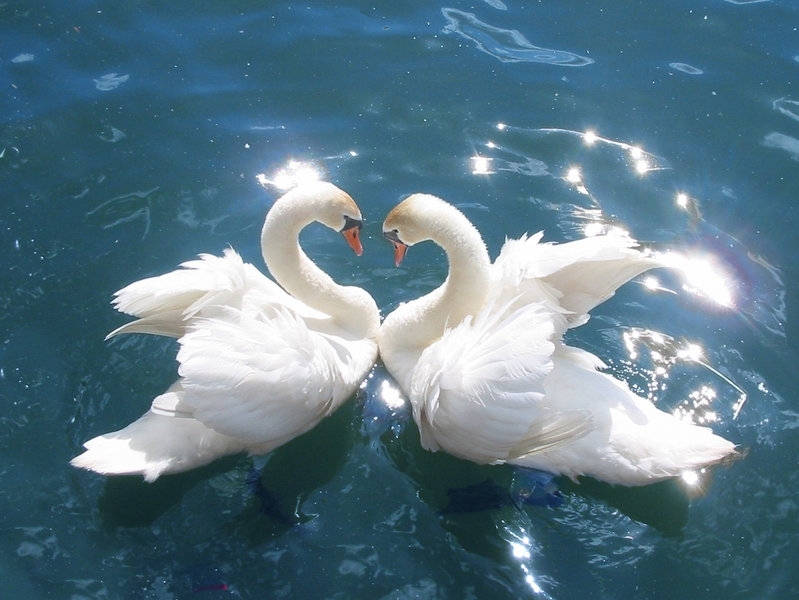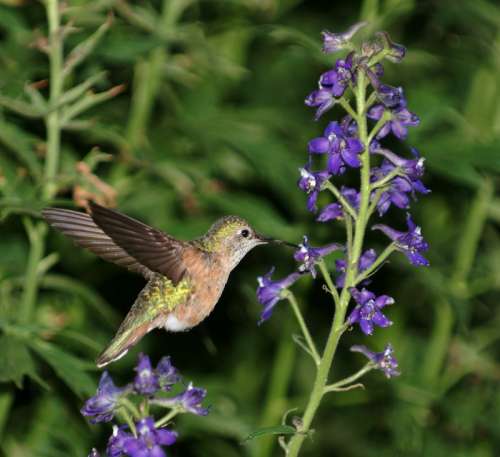
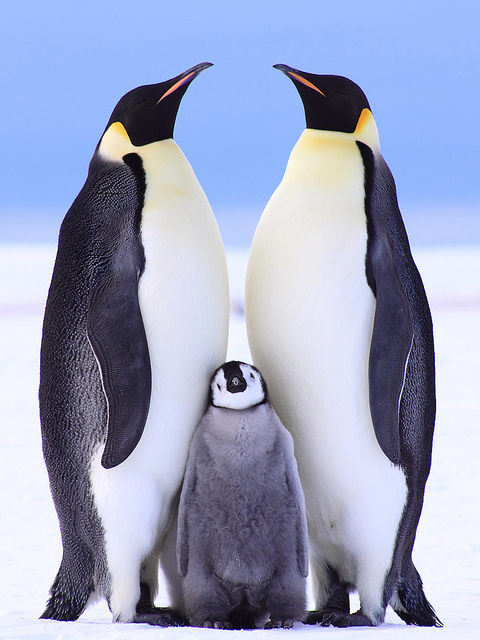
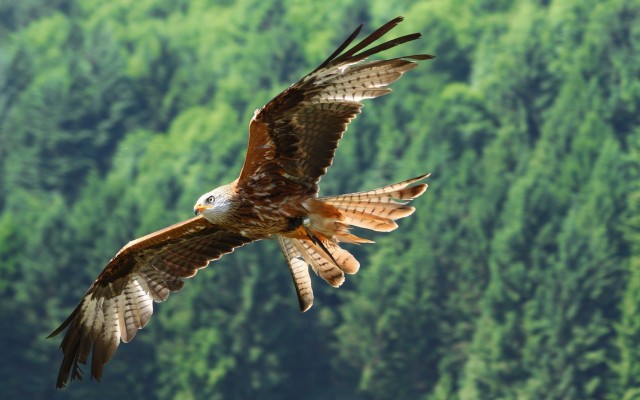
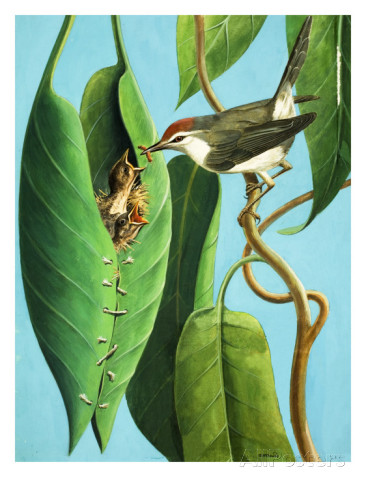
"For the Children.
About Birds"
“Nature is a book that the Heavenly Father has made for His earth born children. It is to teach us of His wisdom, His power, and His love. As we study this book we see how wonderfully each thing is fitted for the place God meant for it. The Bible says that the one who says there is no God is a fool, because all around him is God's workmanship, the signs of His eternal power and Godhead.
Here are some facts about birds and other creatures that help to show us this. They are taken from a little book called "What is a Bird?"
Birds occupy an important and distinct place in the world; but before we enter upon their particular histories, let us notice the formations of a few other animals, that we may the better understand the exquisite skill with which birds have been fitted for their place, and in what way their peculiar bodies have been linked, in their general characters, to the rest of the living creatures on earth. First then let us notice some of the varied forms to be seen in the mouths of animals.
Those creatures which possess but a small quantity of life, such as corals and star-fishes, have their mouths placed in the center of their arms or moving powers, something as the yellow summit of a daisy is placed in the middle of its white florets.
The mouths of insects are refurnished with a variety of instruments, by which they are able to hew, cut, pierce, smooth down, and crunch. In other instances they are supplied with pliable sucker trunks, such as the fly possesses.
Higher animals have an opening in the bones of the head, protected by soft lips; and the two jaws within the mouth are furnished with hard enameled teeth; but a bird's mouth is unlike any of these; it stands forward as a horny tube, more or less ending in a point. This pointed beak acts for the bird like the front teeth in the higher orders of animals; it seizes hold of, and cracks the food; while the gizzard inside the bird's body, answers the purpose which double teeth serve in other animals, that of rubbing the food to a pulp.
When we consider the life a bird is intended to lead, that is, to be continually darting through the liquid air, often at the rate of fifty miles an hour, can you imagine any form of head better suited for the use of such a creature? When men prepare a wedge to drive into wood, they make the end thin, that it may glide easily between the opening sides: an awl is made fine at the point, that it may pierce quickly.
Now the bird's pointed beak opens for its body just such a passage in the air, and so sensible are birds of the benefit of a point in pushing forwards, that you may often observe that sea-gulls and other birds, when taking long flights, form themselves into the shape of a wedge; and because the one that first cuts the track has the hardest work, they often change places, the last coming up to take the foremost point, whilst the previous leader falls back.
The wings of a bird again are unlike those of any other flying creatures. One species of fish is said to fly, but it is only so long as the fins of those fishes are wet, that they can rise above the waters. Bats fly, and insects fly, but none of these creatures move with the powerful actions of the bird. The delicate thin wings of an insect are formed of air-tubes covered with skins so fine, that strong winds break them to pieces. The wings of birds, on the contrary, are thick and firm, and without injuring them, the bird can dash on through severe storms, flapping forcibly against the air, as the paddles of a steamship flap against water.
The bones in the wings of birds are remarkably strong. The muscles that move them are very tough, and the feathers that cover their wings are of the stiffest kind. The delicate wings of an insect are flat on the air; the firm wings of the bird bend over the air, something as the concave top of a watch-glass; by having this form, the air underneath assists in buoying them up.
Birds and insects both fly, but as you know, their bodies are by no means fashioned alike. Birds approach much nearer in form and in nature to four-footed beasts. They have flesh, blood, and bones, which flies and beetles have not. They have, like quadrupeds, four limbs for motion, while the lowest number amongst insects is six and eight. But on looking at a bird, you will see that in its body, the situation the quadruped's two front legs take, is changed in that of the bird; for, to enable the creature to glide through the air, its front limbs are made to strike out horizontally from the sides, while its two hind legs are left in a perpendicular position, to serve for pillars of support, whenever the winged creature alights on the ground.
Again, the feet of birds are unlike those of all other animals. Amongst the lowest animals, the hydra in our ditches, which looks like a piece of green stalk, walks by its sucker tail, drawing it up to its head, then stretching it forth, and again bringing the tail close up; and thus the hydra contrives to creep on at the rate of a few inches or feet in a day. Worms glide over the ground by shortening the muscles that lie between the rings in their bodies; and some have bunches of hair on the outside of each ring, to give them additional help in moving. Crabs sidle and scrape with their eight legs along the wet sands, whilst lobsters spring and crawl.
The legs of Insects are finished off at their tips, with, either, pads, cushions, hairs, or suckers. The four legs of beasts end in fleshy feet, that are either covered with horny hoofs, or tipped with toes and sharp claws. Man, like the bird, is a biped, or two-legged animal; his legs are long, fleshy, muscular, and end in flat feet with ten toes. The feet of birds differ from all those we have named; they are simply composed of a few thin toes, formed of bones, muscles, and skin; the shapes of their toes are, however, much varied; and it is interesting to notice how admirably their wide-spreading feet are adapted to the habits of their owners, whether it be to enable them to stand, hop, walk, roost, climb, or swim.
Insects have no jointed neck; quadrupeds and birds have. Did you ever notice how closely the head of a sparrow appears to lie upon its shoulders, almost as if it had no neck? It is true that the sparrow has but a short one, but notwithstanding that, it has nine delicate little bones in its short length, which play and roll upon each other with such ease, that the bird can move its head with a rapidity our eyes cannot follow. The length of neck in birds, as you must have seen, greatly varies. In the arched neck of the stately swan, are twenty-three beautifully rolling joints. Most birds have not half that number; yet all their necks move with a quickness that shows that their Maker planned that birds should both require and enjoy rapidity of action in the movements of the head.
Woodpeckers tap upon wood for insects; and such birds as herons and bitterns, strike into water for fish, with quickness that prevents our counting the strokes. A bird is ever bobbing its head forwards, sideways, and backwards, railing it in every direction, looking up in the air, down on the ground, burying it under the wing, or laying it flat on its back.
The human finger performs a great variety of work, but its movements are few compared to those of a bird's bill, most of which depend upon the quick and changing actions of the neck.
"Easy Steps for Little Feet"
This is a nest of a very beautiful little bird of India. He is called the Tailor Bird, because he sews up his nest like a tailor sews cloth. He chooses a leaf, usually a large one growing from the end of a twig, but sometimes he sews several leaves together.
He uses his beak to pierce a row of holes along each. Then he finds his thread of grass. He pushes this through the holes with his beak and draws the leaves together. This makes a pretty leaf covering. In this hollow he fits his cozy nest, lined with soft white down. The green leaves hide the nest from the sharp eyes of his foes. Here the little Tailor Bird will be safe.
Is he not a wise, clever little worker? He has no needle, no scissors, no tools of any kind; only his little beak. Yet he makes for his family a better house than man with all his tools and skill could make for him.
God teaches him the best way to do what he has to do. He will teach you also, if you will let Him, just the way to do all that He wants you to do. He has promised to give His Holy Spirit to His children, to teach them and guide them in the right way. So if you want to learn God's way, you must ask Him for His Holy Spirit. He says that He will give this to all who ask.”
May 14, 1903 EJW, PTUK 314-315
A CURIOUS PLACE FOR A NEST.
THE old clock in the tower of the First Presbyterian church, Newark, has not been giving correct time lately Charles Freeman, employed by the common council to regulate the town clocks, was puzzled by the antics of the ancient time-piece, and when it came to a stop recently, he decided to give it a thorough examination. In the wheels he found a tangled mass of hay, twine, grass, cotton, and feathers, amounting to nearly half a peck. A pair of birds had entered the tower through a hole in the dial, and attempted to build a nest in the machinery of the clock. The slow revolution of the wheels tore their work to pieces, but they kept on reconstructing it until they stopped the wheels.
—Little Gem
